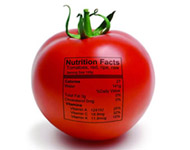Nutrition and Health Sciences, Department of

Department of Nutrition and Health Sciences: Faculty Publications
ORCID IDs
S.K. Sukumaran https://orcid.org/0000-0003-1497-0342
Document Type
Article
Date of this Version
1-12-2023
Citation
Qin Y, Palayyan SR, Zheng X, Tian S, Margolskee RF, Sukumaran SK (2023) Type II taste cells participate in mucosal immune surveillance. PLoS Biol 21(1): e3001647. https:// doi.org/10.1371/journal.pbio.3001647
Abstract
The oral microbiome is second only to its intestinal counterpart in diversity and abundance but its effects on taste cells remains largely unexplored. Using single-cell RNASeq, we found that mouse taste cells, in particular, sweet and umami receptor cells that express taste 1 receptor member 3 (Tas1r3), have a gene expression signature reminiscent of Microfold (M) cells, a central player in immune surveillance in the mucosa-associated lymphoid tissue (MALT) such as those in the Peyer’s patch and tonsils. Administration of tumor necrosis factor ligand superfamily member 11 (TNFSF11; also known as RANKL), a growth factor required for differentiation of M cells, dramatically increased M cell proliferation and marker gene expression in the taste papillae and in cultured taste organoids from wild-type (WT) mice. Taste papillae and organoids from knockout mice lacking Spib (SpibKO), a RANKL-regulated transcription factor required for M cell development and regeneration on the other hand, failed to respond to RANKL. Taste papillae from SpibKO mice also showed reduced expression of NF-κB signaling pathway components and proinflammatory cytokines and attracted fewer immune cells. However, lipopolysaccharide-induced expression of cytokines was strongly up-regulated in SpibKO mice compared to their WT counterparts. Like M cells, taste cells from WT but not SpibKO mice readily took up fluorescently labeled microbeads, a proxy for microbial transcytosis. The proportion of taste cell subtypes are unaltered in SpibKO mice; however, they displayed increased attraction to sweet and umami taste stimuli. We propose that taste cells are involved in immune surveillance and may tune their taste responses to microbial signaling and infection.
Included in
Human and Clinical Nutrition Commons, Molecular, Genetic, and Biochemical Nutrition Commons, Other Nutrition Commons


Comments
Copyright: © 2023 Qin et al. This is an open access article distributed under the terms of the Creative Commons Attribution License,